Published October 2018 | Updated February 2025
- Should I install a stair runner?
- Can I order a custom stair runner?
- Should I hire a professional installer?
- Is padding necessary for carpeting stairs?
- Which material should I use for my stair runner?
- Can I install a stair runner myself?
- I have X number of steps. How long of a runner do I need?
- How do I measure stairs for a runner?
- Corners & Curves on Staircases
Should I install a stair runner?
Stair runners are a great addition because they help buffer sound, provide warmth, cushioning underfoot and reduce slipping. A stair runner also adds a fun design element to your home’s decor. Since not all stairs are created equally, we highly recommend talking to a professional installer who has experience with stair runner installation—they can measure your stairs and advise on not only what kind of material to order but how much.
Can I order a custom stair runner?
Yes, we make custom-sized stair runners from almost all of our floorcovering materials. We specialize in flatweave carpet, a European woven style that makes beautiful stair runners.
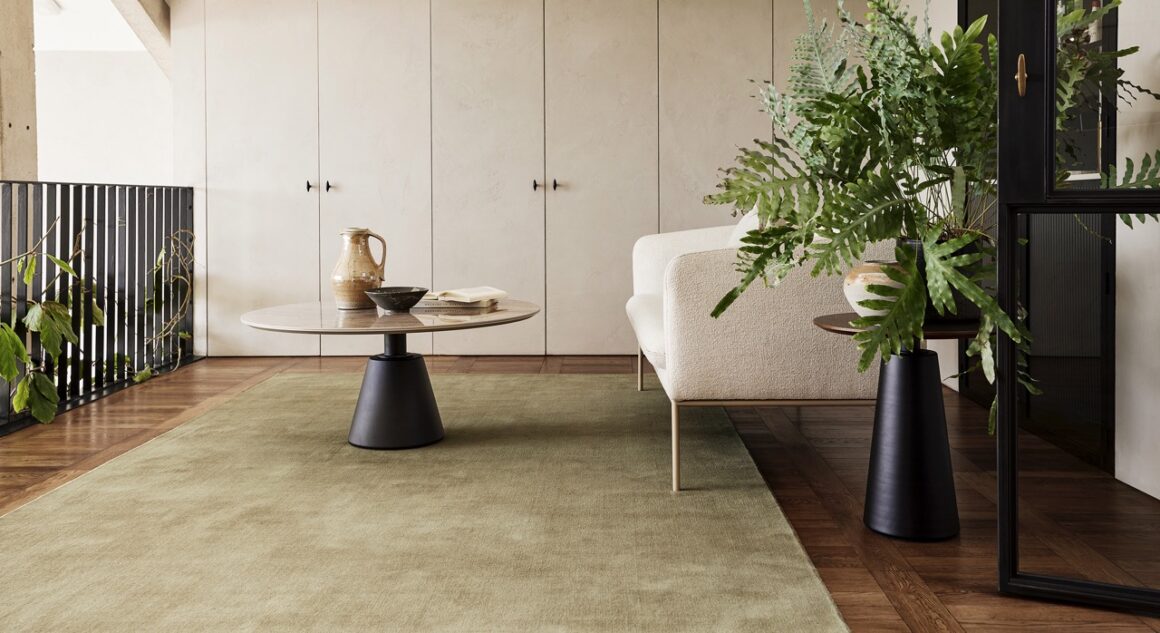
Our Rug Buying Guide is a one-stop shop for gathering all you need to know about buying a rug, from selecting the best material for your lifestyle to the delivery of your new rug.
Should I hire a professional installer?
Stairs have curves, angles, turns, landings, different heights and widths, so it’s best to avoid mistakes by measuring on your own. You might make a mistake and not order enough broadloom. A professional installer knows how to account for all the angles and curves and helps you figure out how much material and binding (if desired) you need to order. All installation is done directly onsite creating your one-of-a-kind stair runner.
Is padding necessary for carpeting stairs?
In general, we recommend a rug pad or underlayment for your stair runner. The extra cushion from a rug pad will increase comfort, absorb sound, and prolong the lifespan of your carpet. Also, a rug pad protects your floor, especially if the rug has a latex backing (latex is known for sticking to hardwood floors).
Choose a thin yet dense rug pad that can stand up to the traffic while not raising the height of the runner. The rug pad should be narrower than the width of the runner so that it is not visible on the sides.
The rug pads we sell are meant for area rugs and not suitable for installation.
However—and here we sound like a broken record—we suggest you speak with you installer or our customer service team. The necessity for padding might depend on a few factors: the weave structure, the thickness of your chosen carpet, the carpet’s backing material, or the amount of foot traffic on your stairs. Sometimes too much padding on stairs creates a slipping hazard, so speak with your installer and if they recommend padding, they will order the kind and amount needed for your project.
Don’t forget to calculate lead times into your project plan!
A custom stair runner rug takes time to create, a broadloom roll of carpet is heavy, and they all take time to ship to you!
Which material should I use for my stair runner?
There are many materials that make great stair runners. Wool is a champion because it is durable, insulates for both temperature and sound, plus it comes in a wide variety of styles, including wool blends. Natural and synthetic fibers are favorites for stair runners as well because of their durability.
Each fiber gives a different aesthetic, so head over to our Stair Runner resource page to see all your options. Below is a stair runner showcase of different materials and installation styles for your inspiration.
Synthetics: SynSisal® & Woven Vinyl
Durable, easy to clean and a great option for high-traffic areas like staircases.
Natural Fibers: Sisal, Seagrass, Coir
Tough fibers with natural hues and textural intrigue.
Wool & Wool Blends
Long lasting, high quality wool is a comfort underfoot and an excellent choice for stair runners.
Can I install a stair runner myself?
Installing stair runners can be tricky—even for straight runners that are not installed wall-to-wall. We recommend working with an experienced installer who can safely and properly install your stair runner. If you’re set on doing it yourself, please see below.
I have X number of steps. How long of a runner do I need?
While it is possible to measure the stairs yourself, in our 30+ years of experience, we have found that our customers achieve the best fit and best yield from materials when they work with an experienced installer. We recommend finding a local installer. They’ll measure your staircase and let you know what size of stair runner you need. If you’re set on doing it yourself, please see below.
How do I measure stairs for a runner?
For bound runners on straight staircases, it is possible to measure the stairs yourself. However, as stated above, we have found that the best fit generally comes from working with an installer who knows how to properly measure stairs.
To measure for straight staircases, follow the instructions below. Please note that finished rug dimensions may be 1-2″ off specified dimensions as materials expand and contract in various environmental conditions. Many of our customers choose to order a runner a little longer than needed, binding only the long edges, and will order additional loose binding to match. This way they can work with an installer who can cut and finish the runner to fit their stairs perfectly.
Measuring Your Own Stairs
- Measure the width of your stairs (X). Our customers usually specify that runners be made a little narrower than the width of their stairs, so a few inches of woodwork will show on either side across the width of the stair. Convert this measurement to feet and inches.
- Measure the stair riser height (Y) from the bottom to the lip of the step.
- Measure your stair tread depth (Z), making sure to measure around the lip of the stair tread, if present.
- Count how many risers (Y) you have and multiply by the height of the riser (from step 2).
- Count how many stair treads (Z) you have and multiply by the depth of the stair tread (from step 3).
- Add the numbers from step 4 and step 5, converting the total to feet and inches. This is the length of the stair runner you’ll need.
- Consider adding additional length to your runner to be on the safe side. We can bind the long edges only but can send enough loose binding material for the short sides. This way, you can work with a carpet installer to trim and finish the runner for a perfect fit. Our customers usually note this in the comments section at checkout if they’d like us to bind the long edges only and send enough loose binding to finish the short sides.
Corners & Curves on Staircases
For staircases that curve or turn corners, you’ll need to work with an installer to get a good fit. They will measure your stairs and let you know how much broadloom material you need to order for your custom stair runner. Then order broadloom and loose binding material (if needed) from us. Your installer will cut, bind, and install to fit your staircase.
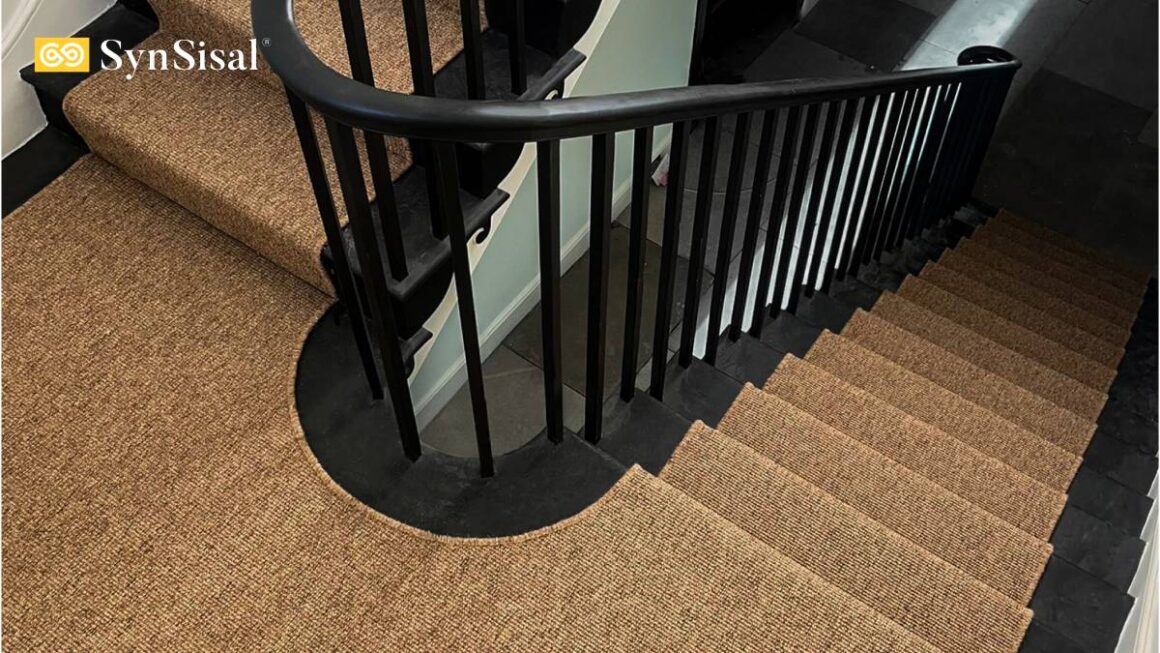
Contact us anytime with your questions—we are happy to help you find the best weave for your home’s look and lifestyle.

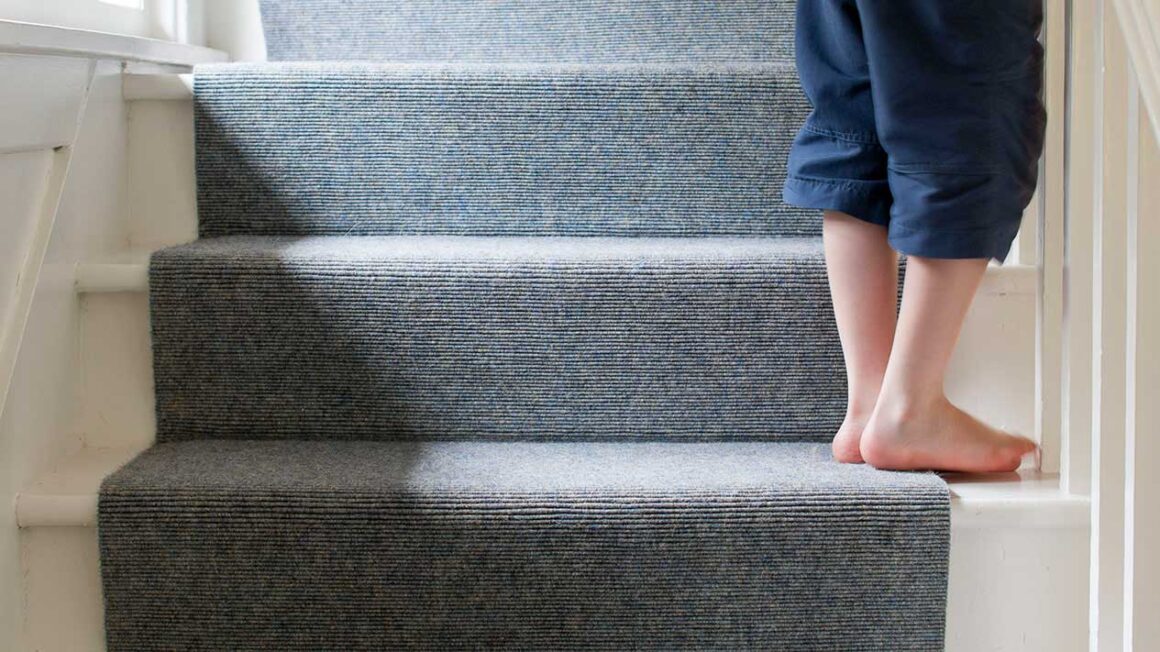
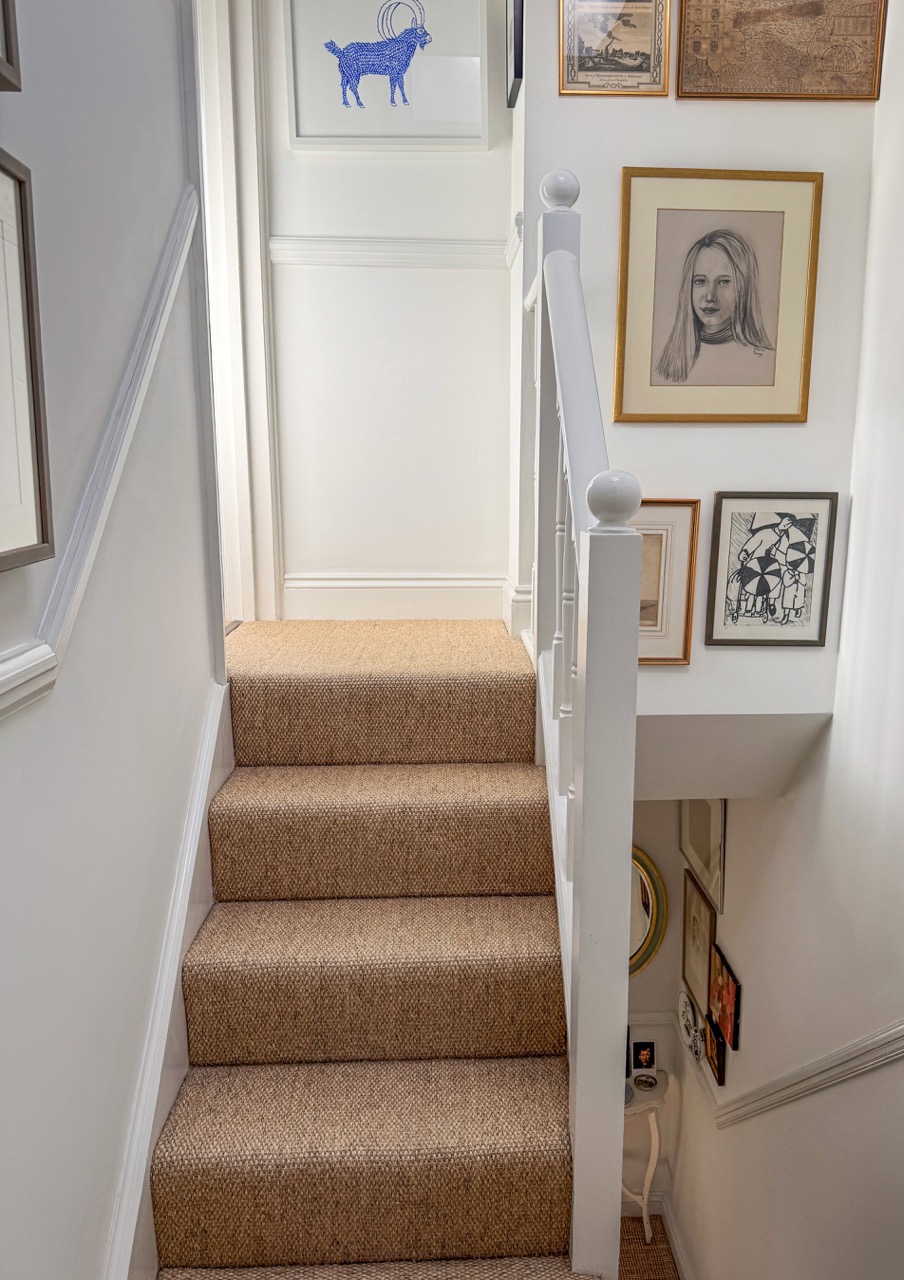
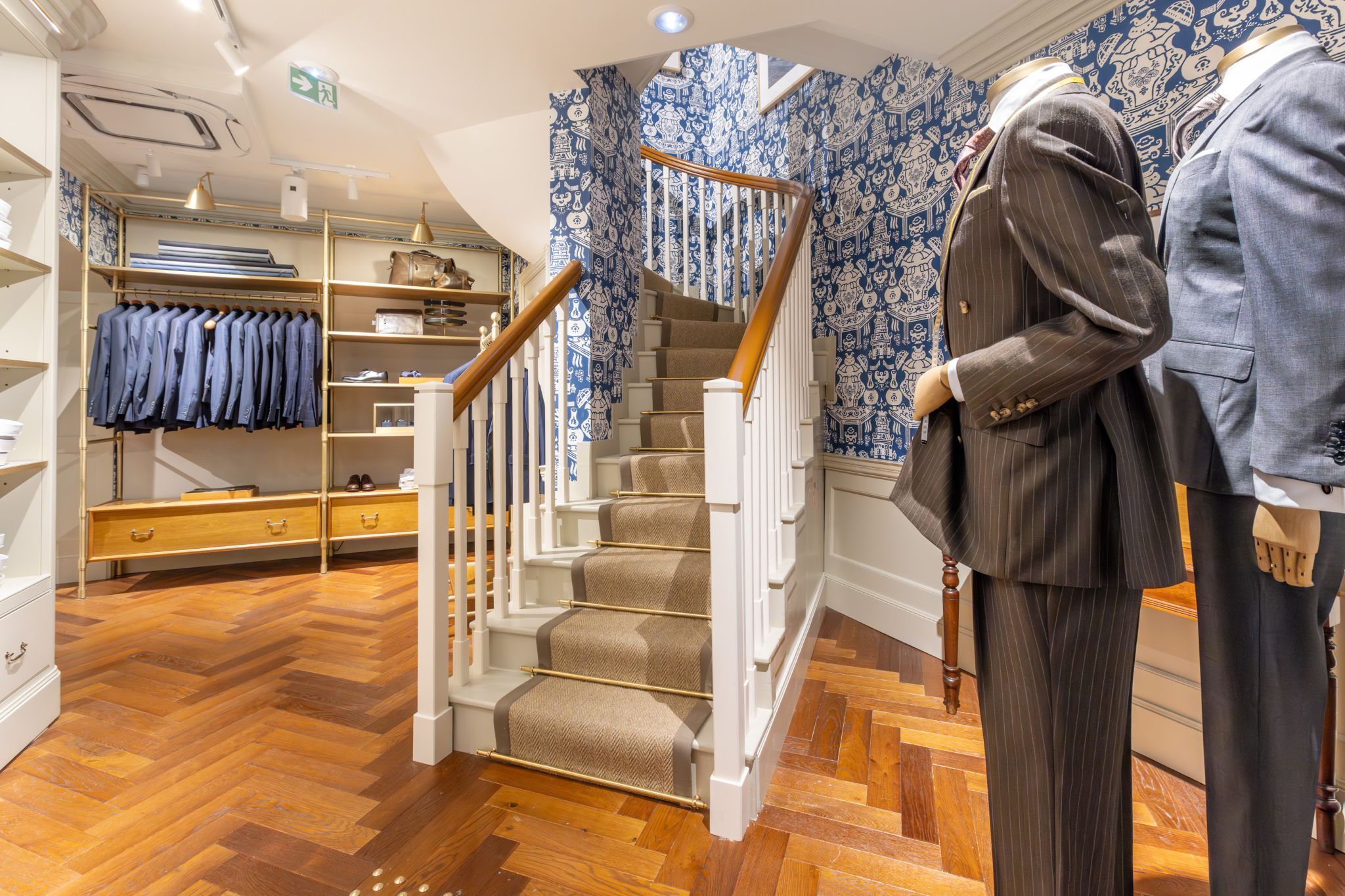
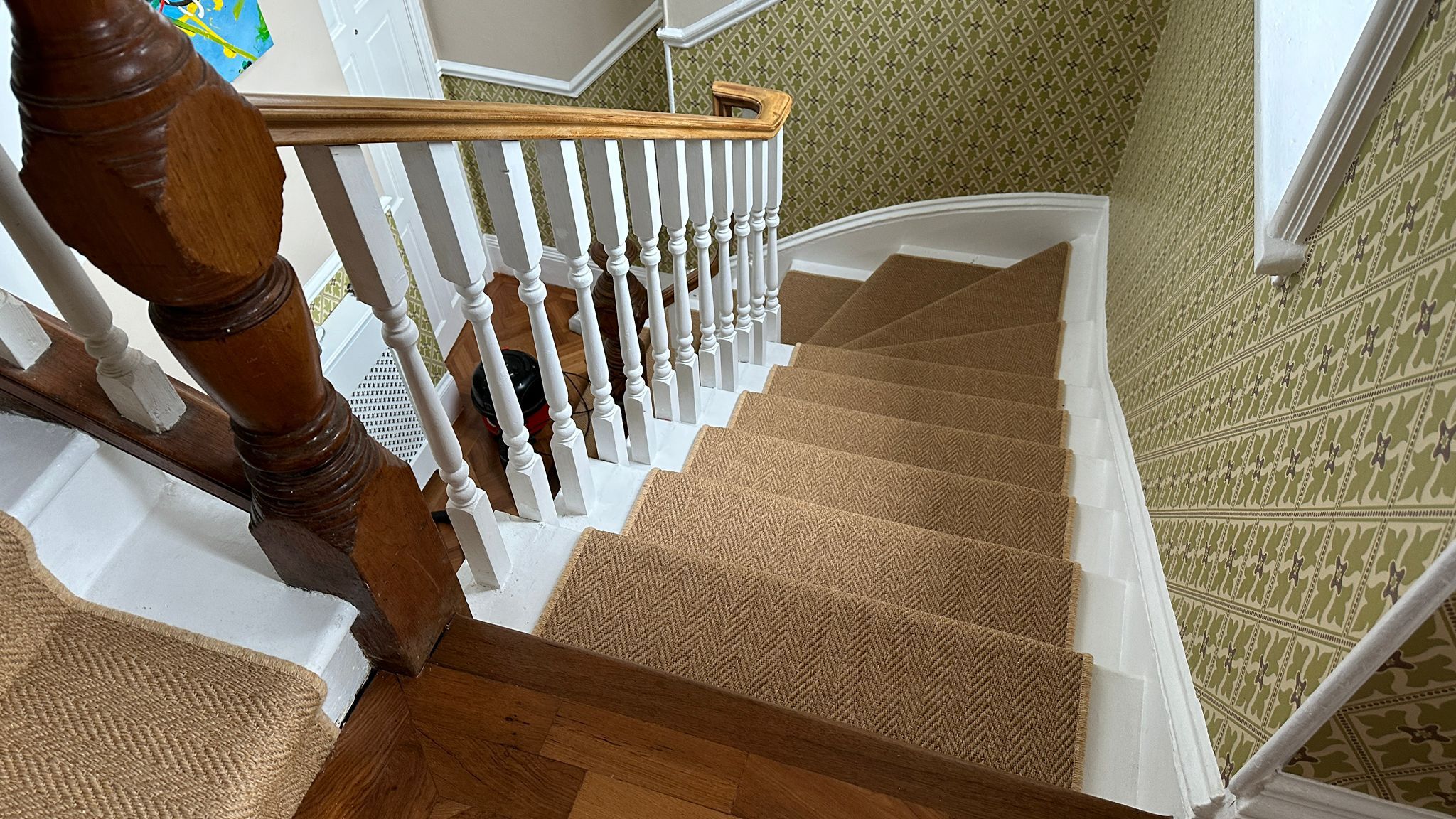
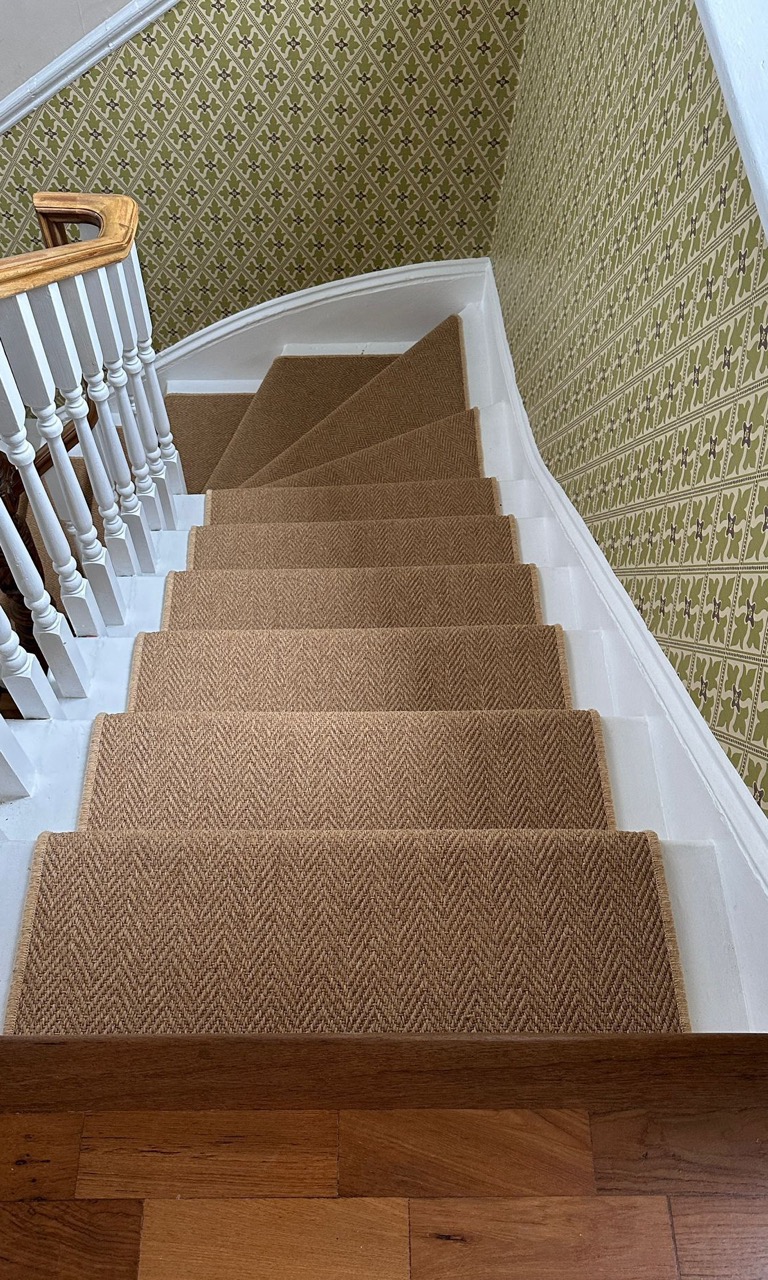
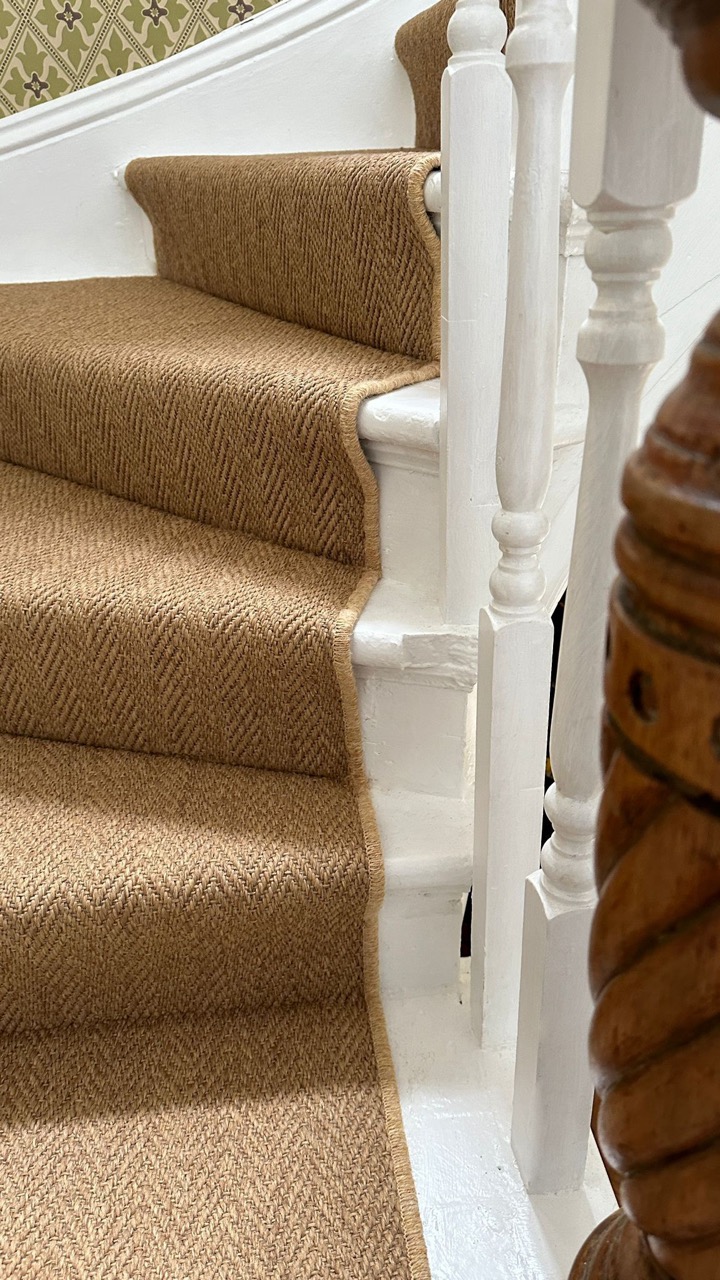
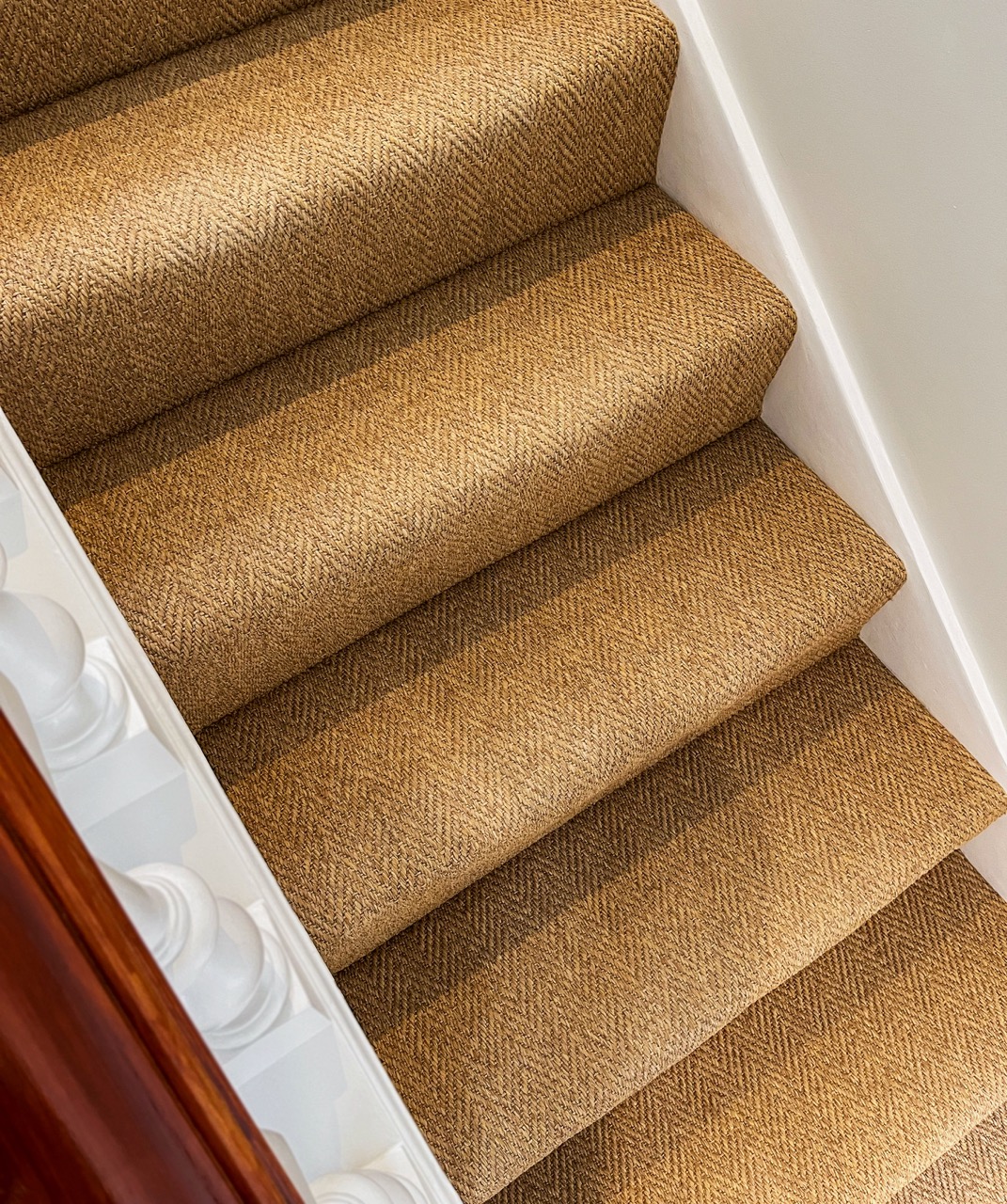
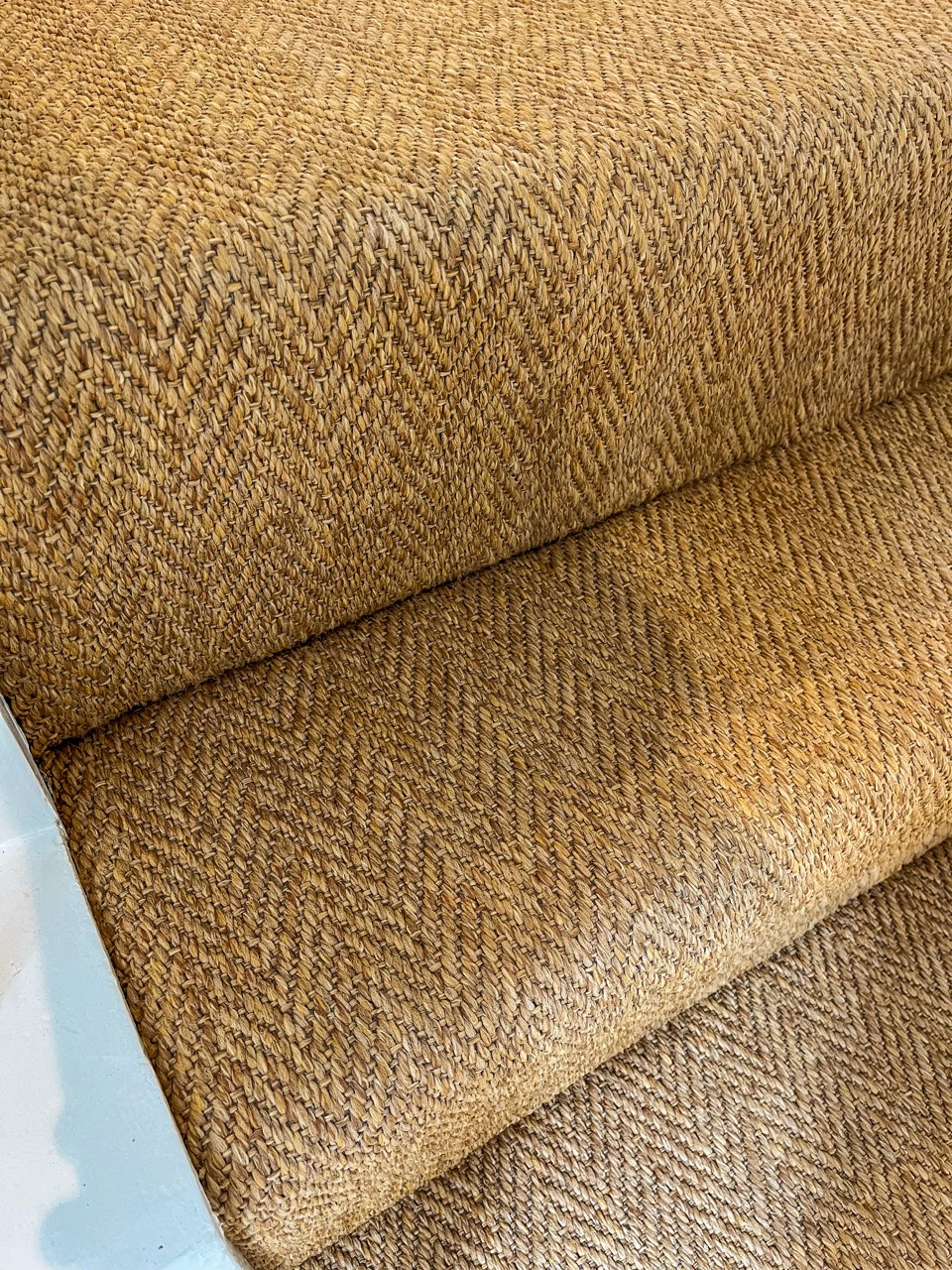
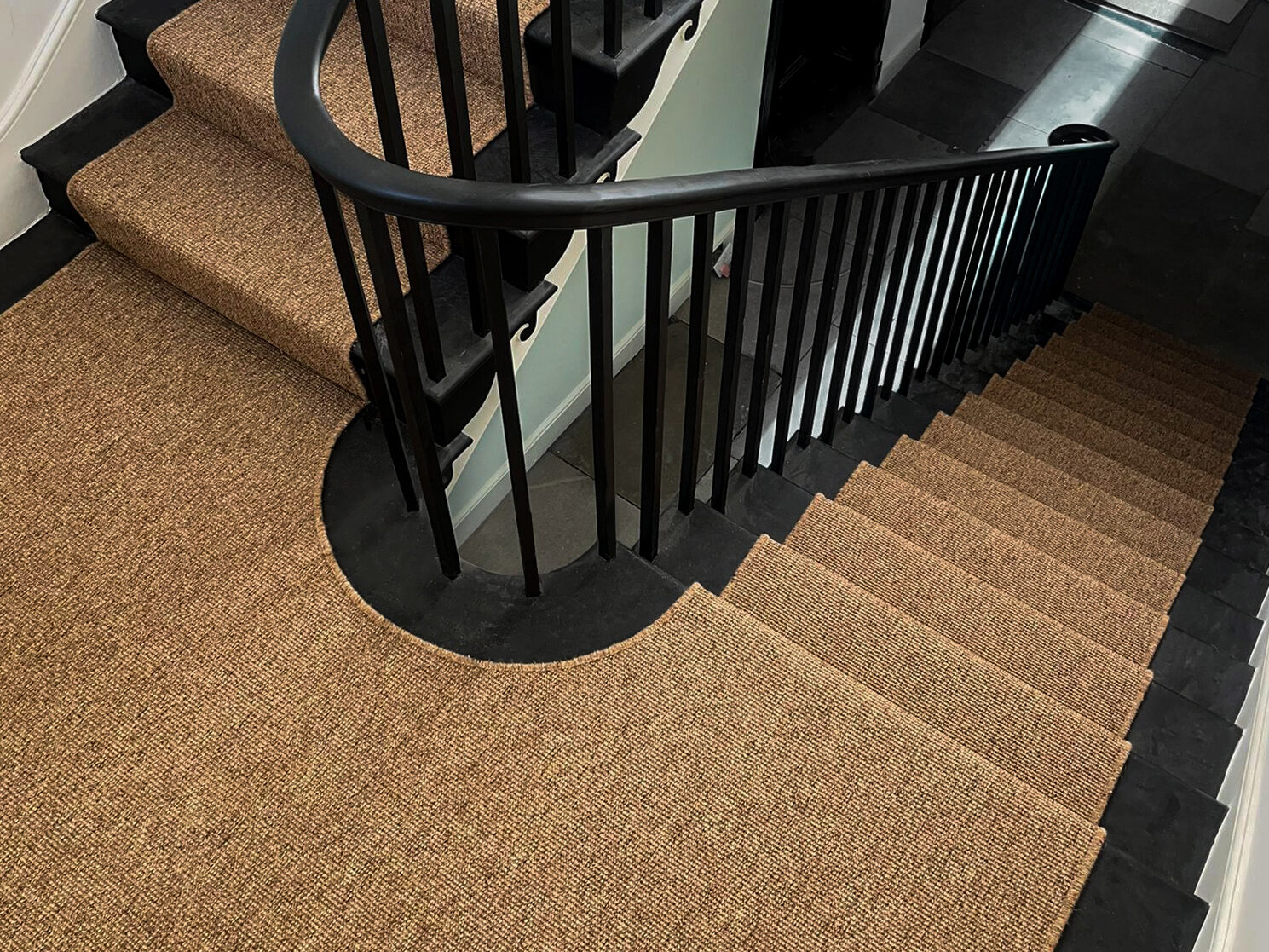

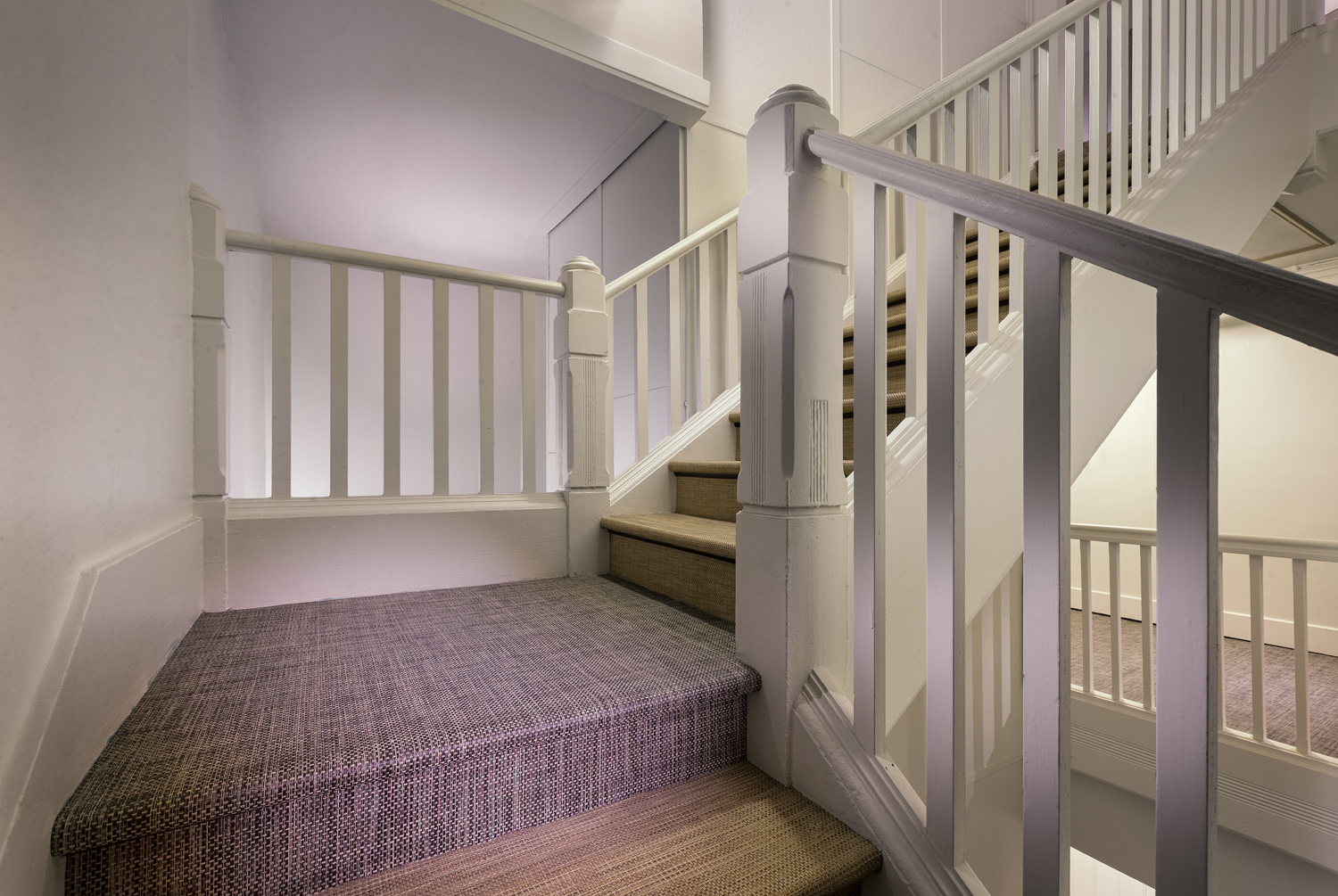
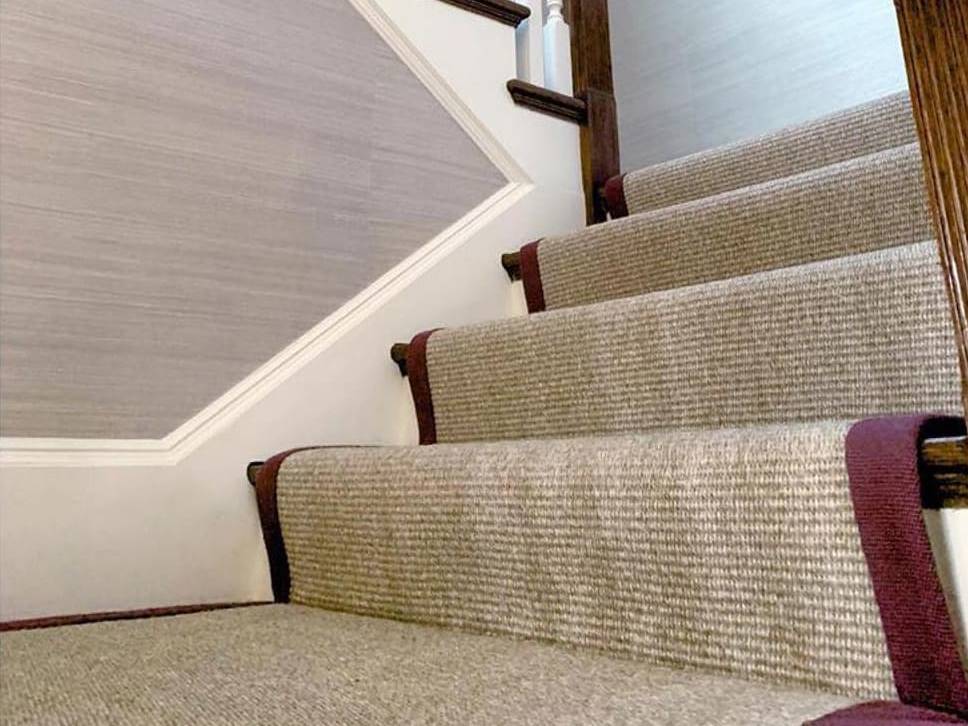
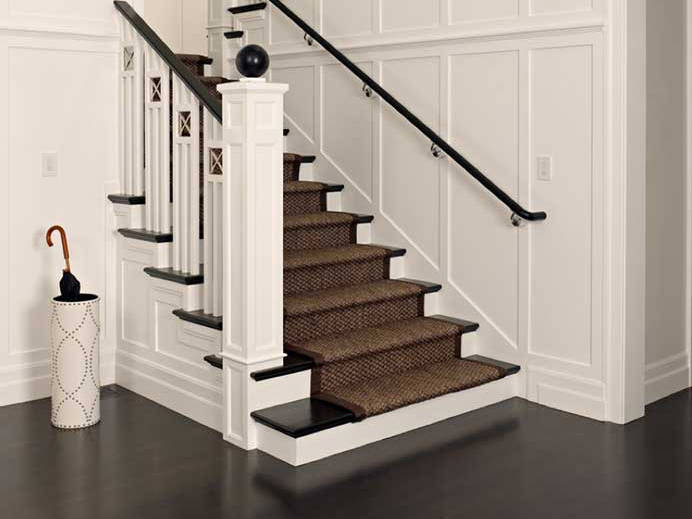
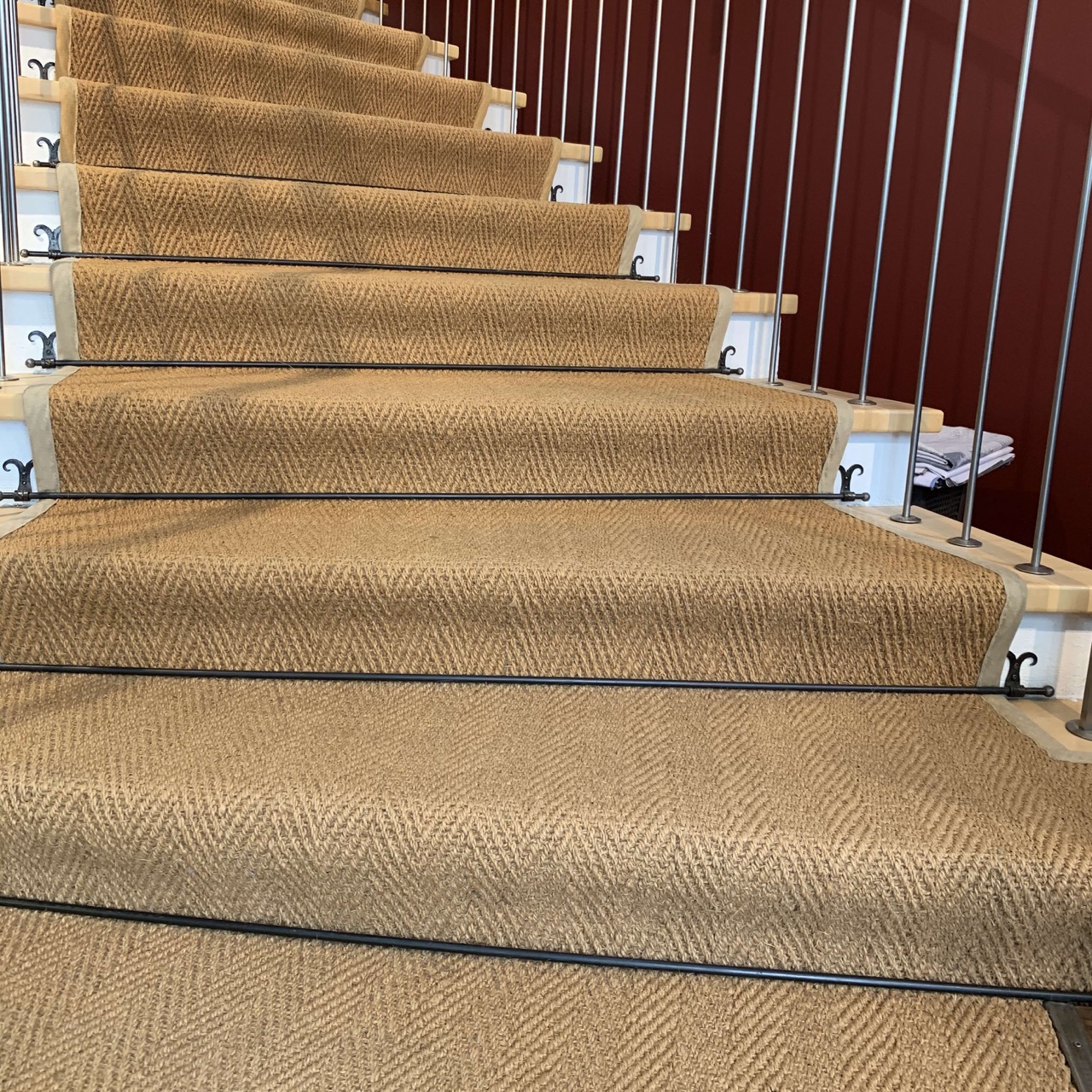

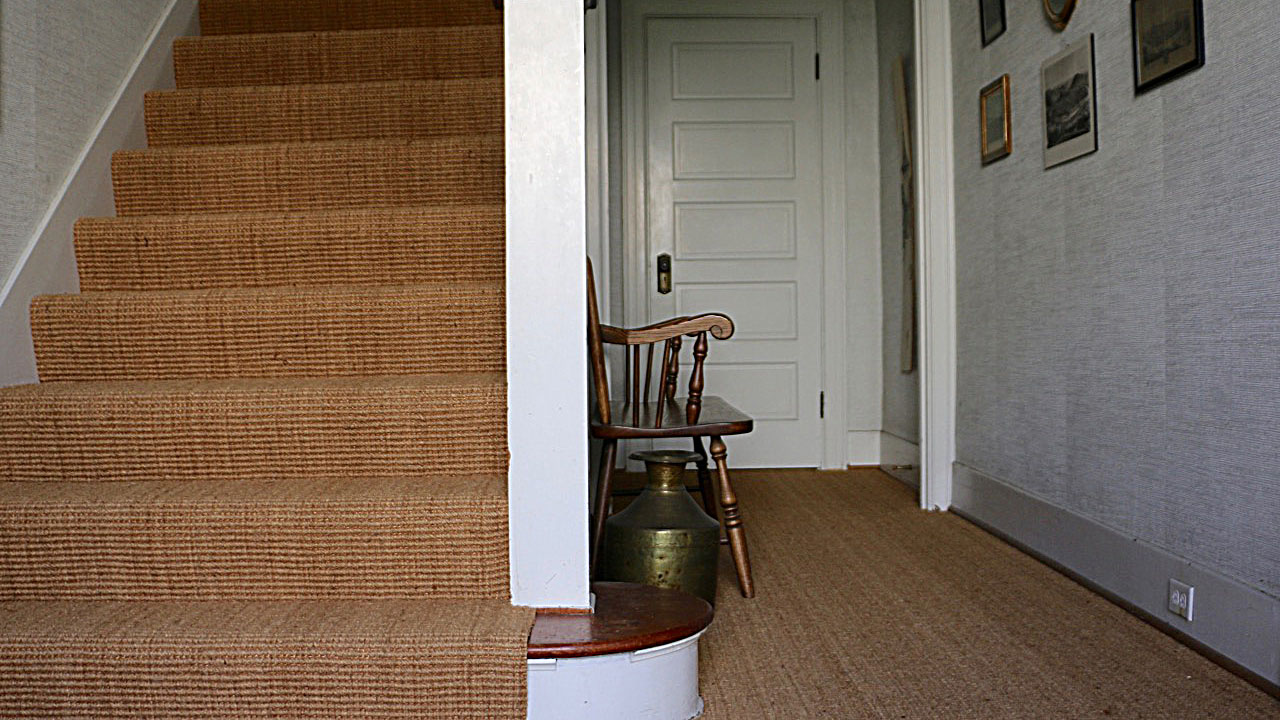

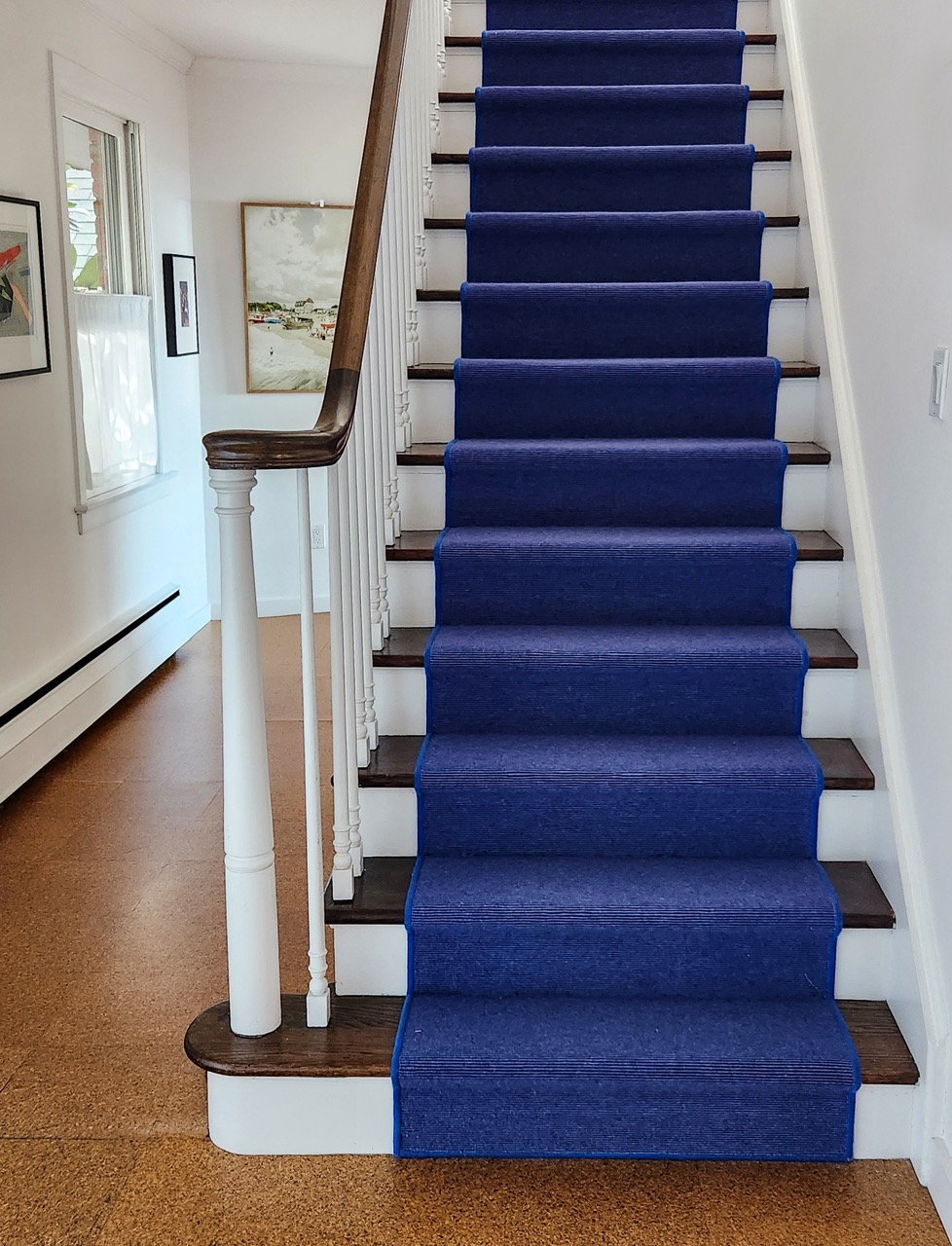
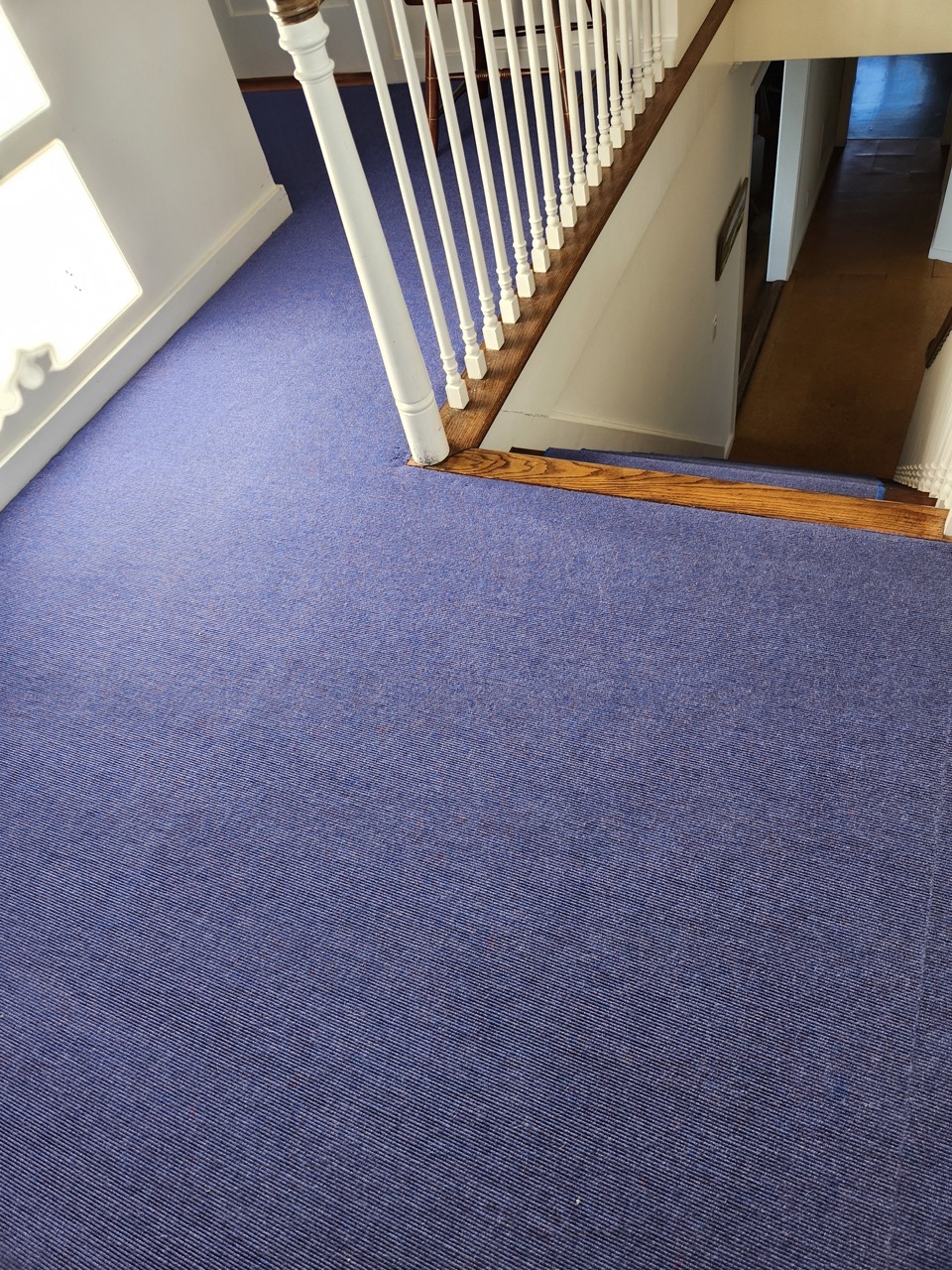
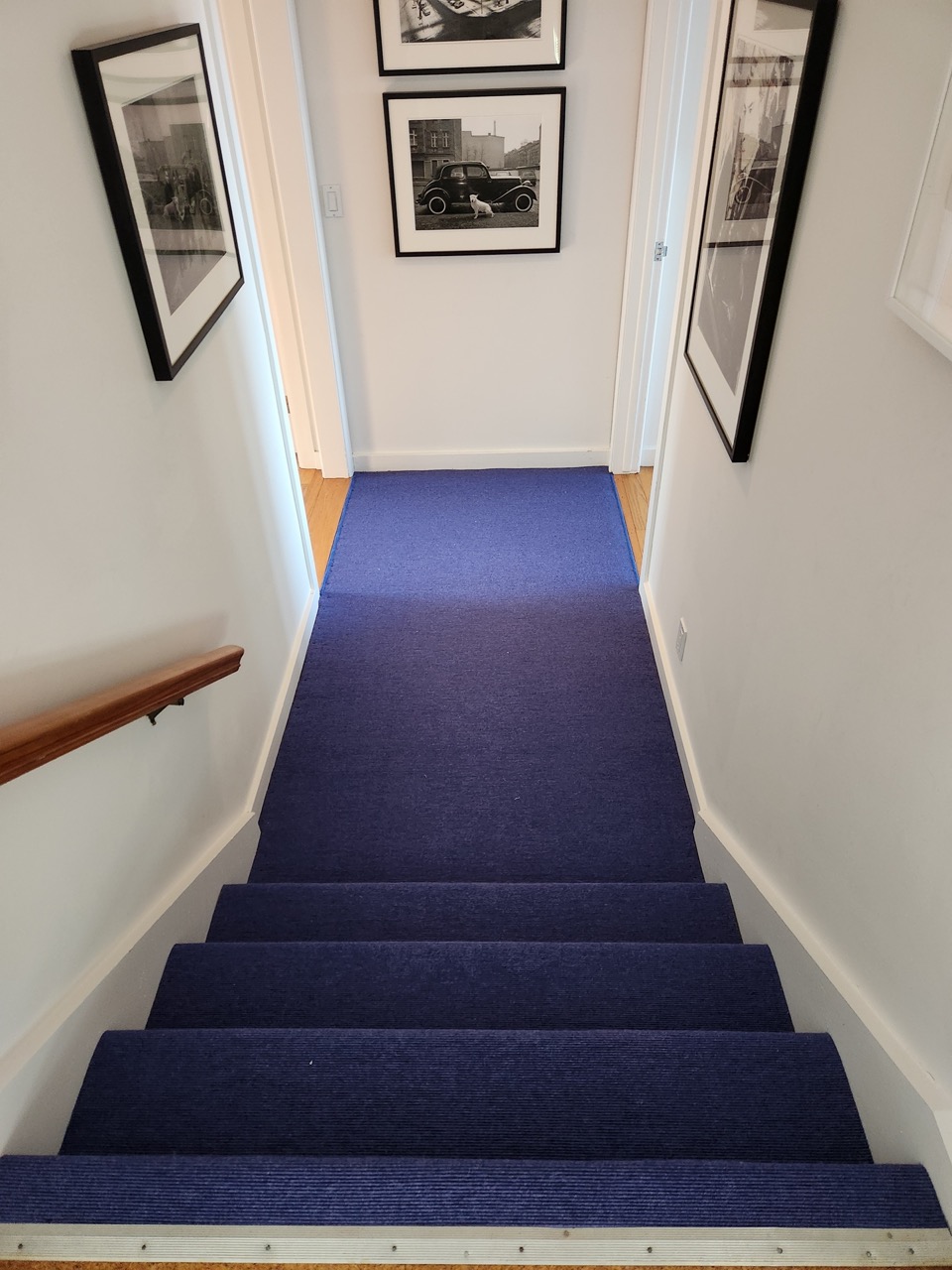
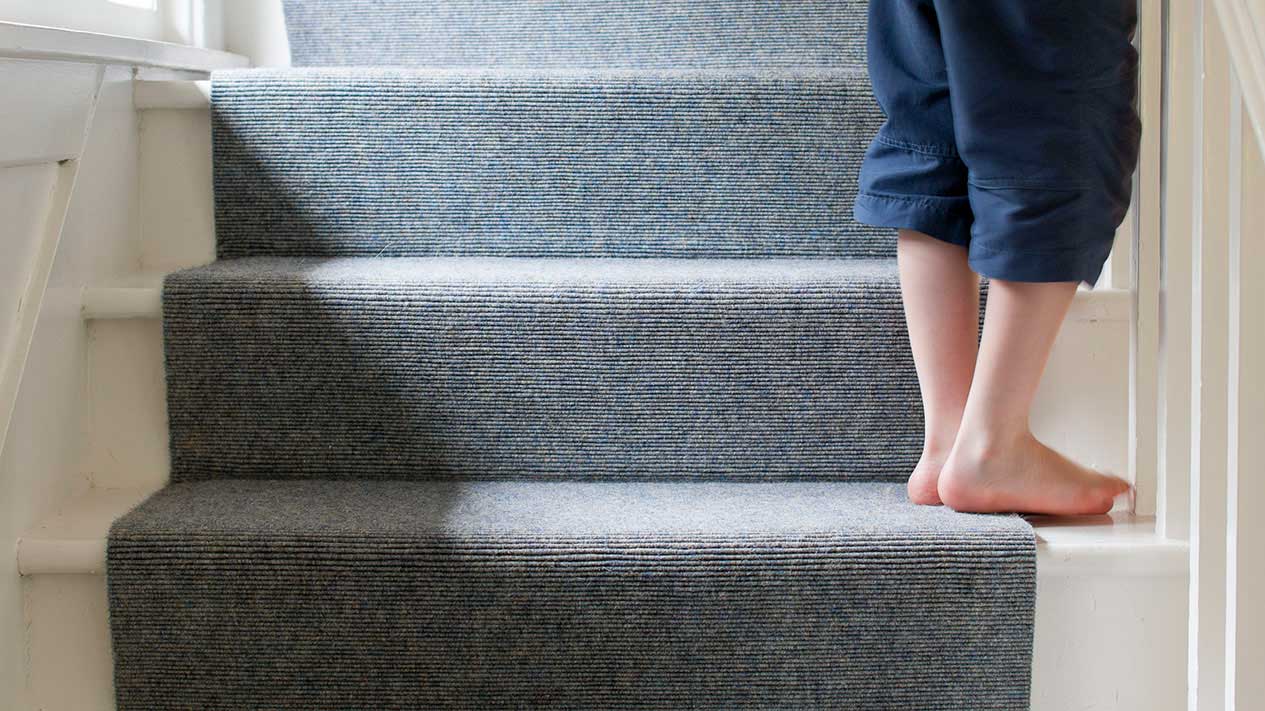
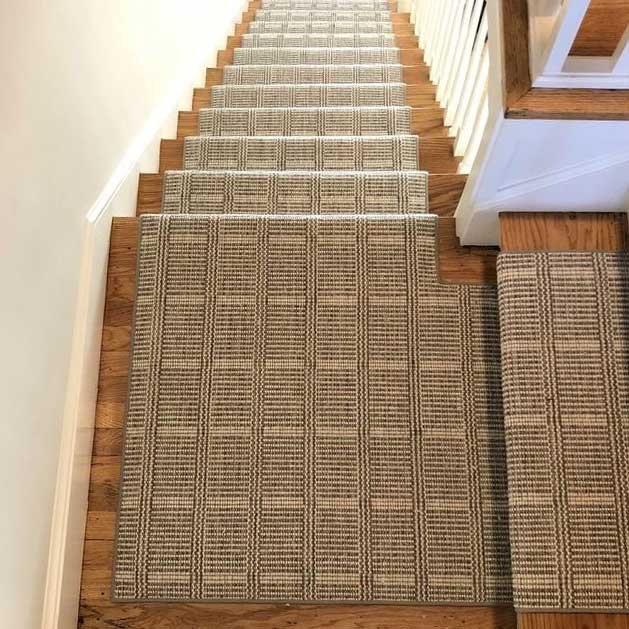

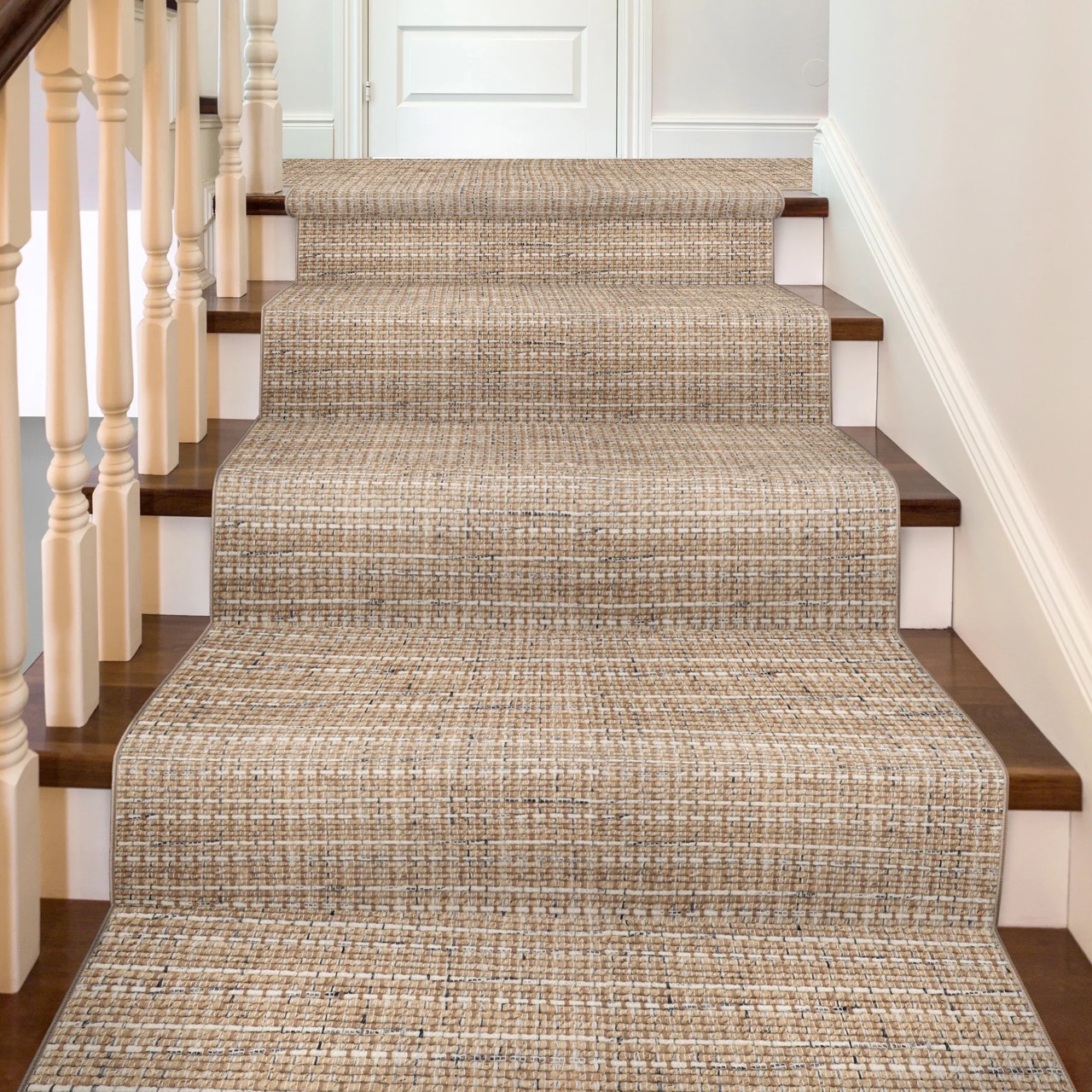
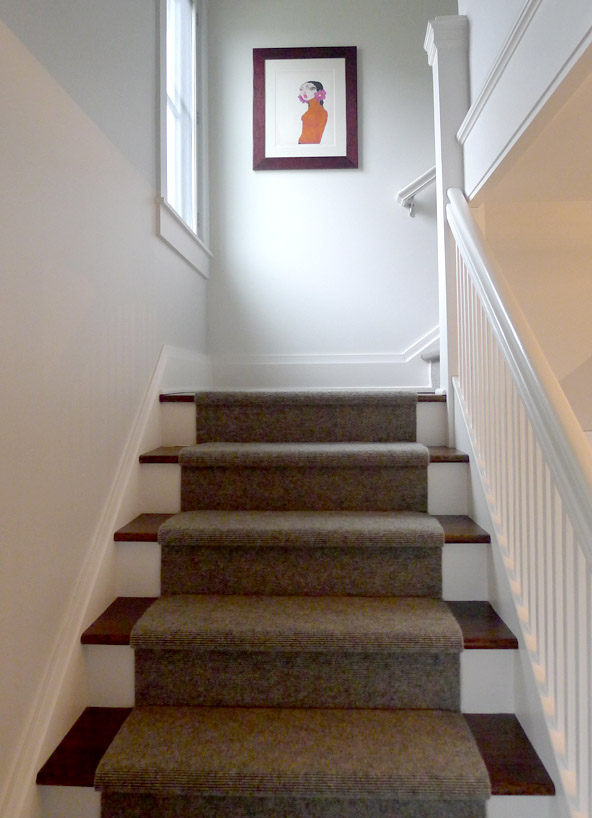
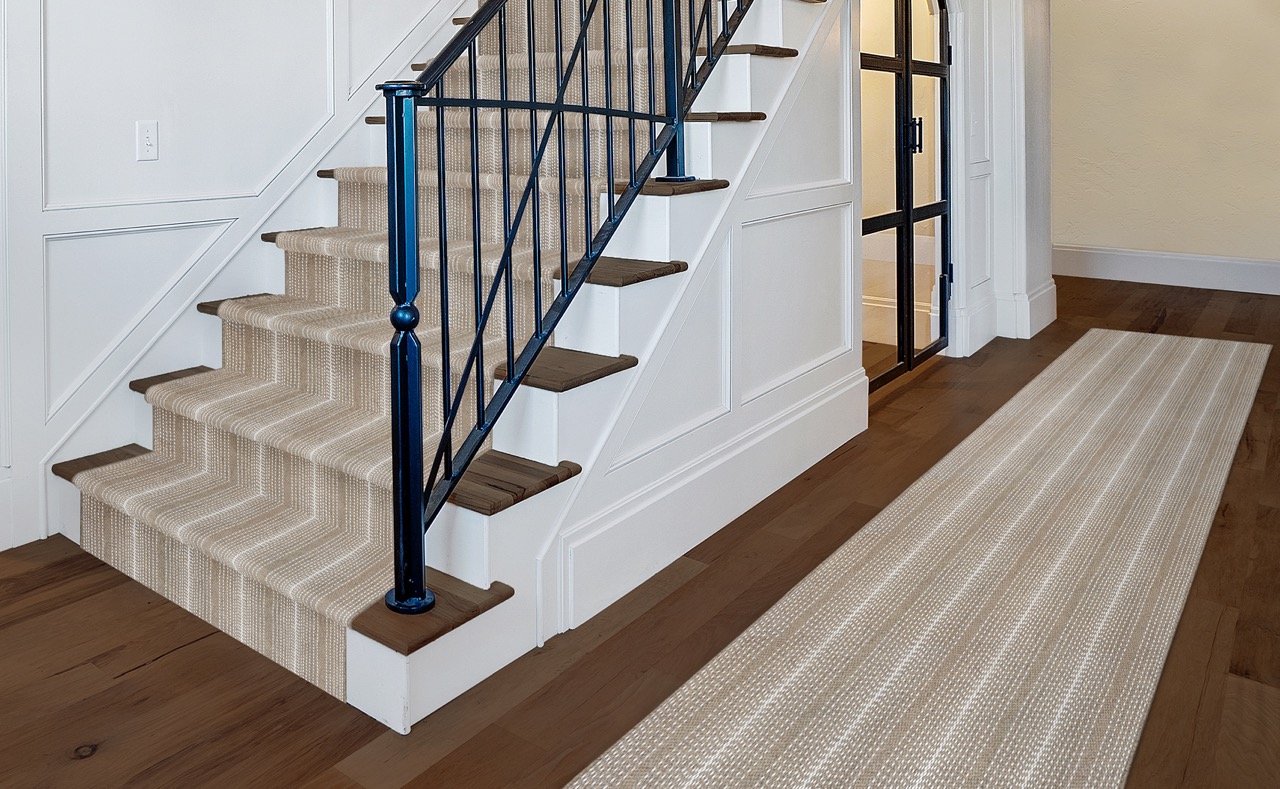
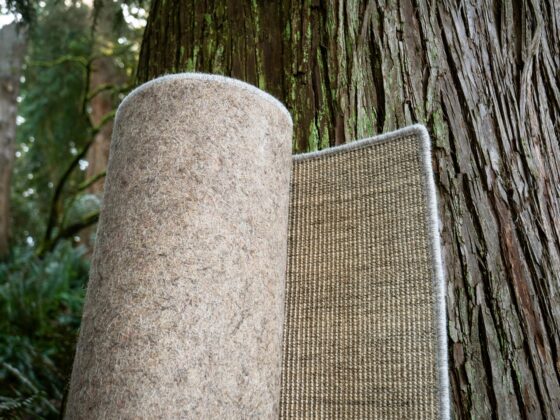
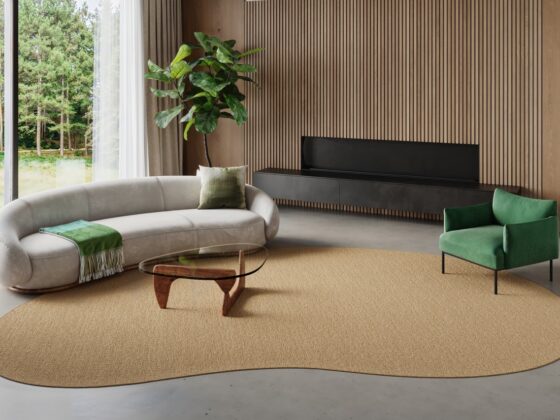
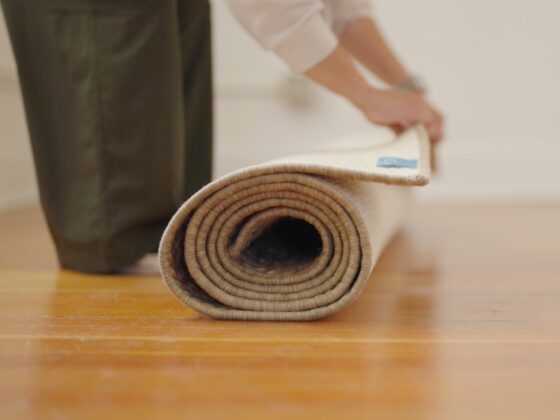
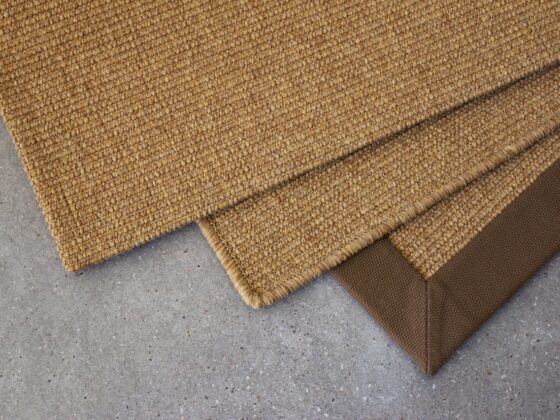
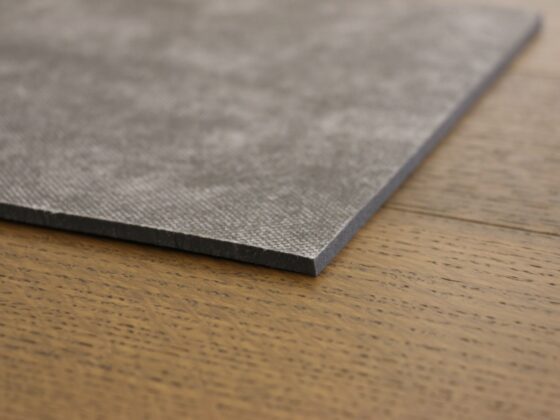

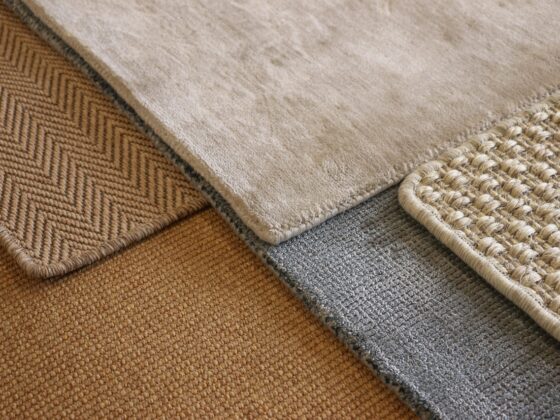

1 comment
Hi, my sisal rug is very old. But the fibers are in great shape. I would like to remove the factory padding that is on my Cecil and replace it myself. Will this harm my rug in any way.
Hi Patsy,
Thank you for your inquiry! We haven’t heard of a rug pad removal successfully done before, so we wouldn’t know how to recommend the best solution for you without a chance of ruining your sisal rug. Wishing you good luck!
Best,
Teneille